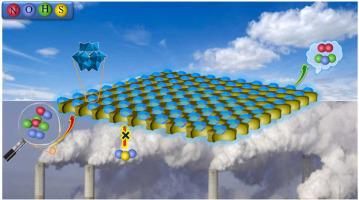Journal of Alloys and Compounds ( IF 5.8 ) Pub Date : 2022-11-29 , DOI: 10.1016/j.jallcom.2022.168272 Hongjian Zhu , Rui Wang

|
The catalysts with low-temperature activity and high sulfur resistance are expected in the denitration application. To obtain an efficient and eco-friendly catalyst for NOx abatement, phosphotungstic acid (HPW) promoted Mn-Fe bimetal oxide composites were constructed by colloidal solution combustion synthesis followed by the impregnation method. Their catalytic mechanism and activity at low temperature analyzed in detail by XRD, BET, SEM, XPS, H2-TPR, NH3-TPD and in situ DRIFTS characterizations. The results show that the large surface area and uniform mesoporous of Mn-Fe oxide contributed to the dispersion of HPW nanoparticles. The highly dispersed HPW can regulate the surface acidity and redox property of the catalyst. The Mn0.25Fe0.75-HPW50 compound combined the redox property of mesoporous Mn-Fe oxide and the acidic advantage of HPW showed a wider operating temperature window (125-400 °C, NOx conversion >94%) with higher N2 selectivity and SO2 resistance. Langmuir-Hinshelwood (L-H) and Eley-Rideal mechanisms (E-R) coexist in the SCR reaction. This work can provide a strategy for designing composite materials with low-temperature activity and high sulfur resistance. The developed porous HPW-promoted Mn-Fe oxide would be a promising catalyst candidate for NOx removal.











































 京公网安备 11010802027423号
京公网安备 11010802027423号